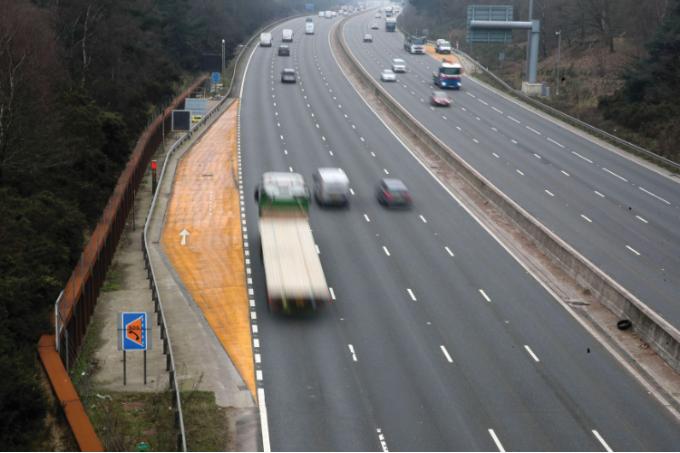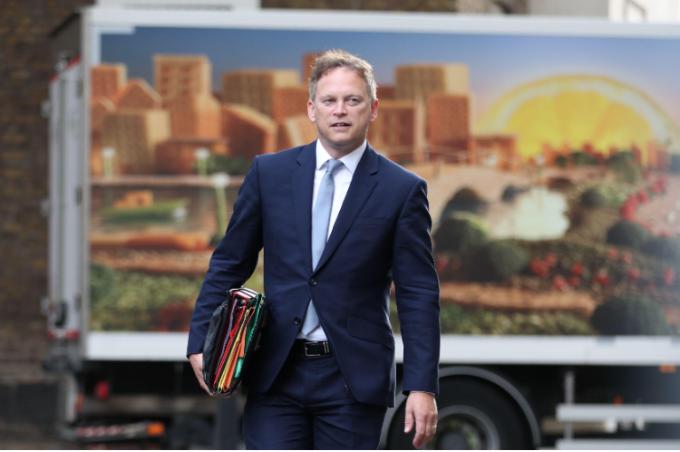Smart motorways: essential infrastructure or needlessly dangerous?
38 people have died on smart motorways between 2015 and 2019, leading to political pressure for Highways England and the Department for Transport to reintroduce the hard shoulder | Alamy
12 min read
Campaigners are calling for smart motorways to be scrapped. They argue that converting the hard shoulder into a normal traffic lane has led to multiple deaths. But Highways England insists they are safe and it’s just a case of improving public awareness. Georgina Bailey and Kate Proctor report
Claire Mercer had never heard of a smart motorway. Then, on Friday 7 June 2019, her husband Jason, 44, had a small collision with another car on a stretch of the M1 near Sheffield. The motorway had been converted to “all-lane running” as part of Highways England’s expansion of smart motorways: there was no hard shoulder.
“We had breakfast, and had a nice chat and coffee. And then at eight o’clock he stood up, kissed me goodbye, told me he loved me, and he actually said it should be quite an easy day. And off he went. That was at 8 o’clock. And apparently he was dead by 8.15,” Mercer recalled.
Jason Mercer and the other driver, 22-year-old Alexandru Murgeanu, had stopped their cars to exchange details and were on the inside lane of the motorway when a lorry driven by Prezemyslaw Szuba crashed into them, killing them both. They are two of the 38 people killed on smart motorways between 2015 and 2019.
Mercer doesn’t think her husband knew what a smart motorway was either. “We did talk about anything and everything, and I do believe that if he knew, he’d have mentioned them to me.”
After Jason’s death, she began to gather information from the families of other victims. Mercer has since set up Smart Motorways Kill, which is now in the process of bringing a judicial review against Highways England to get all-lane running smart motorways banned.
Had Jason known what smart motorways were, would things have been different? It is impossible to tell, but Mercer doesn’t believe that it would have been enough.
“Jason and Alexandru had their bump and stopped at a sign that said ‘no hard shoulder for four miles’. So they knew there was no hard shoulder… they couldn’t see the closest emergency refuge area. It was a mile out of sight. There was no hard shoulder, there were no refuges, they didn’t know what to do, so they stopped where they could. They couldn’t get over the barrier because of the 30-foot drop onto the slip road below. And they couldn’t get their vehicles right out of the lane because there’s a crash barrier stopping them. What could they do?”

Claire Mercer arrives at Sheffield Town Hall for the inquest into the deaths of her husband, Jason Mercer, and Alexandru Murgeanu, 18 January 2021
Szuba, 40, was jailed for 10 months last October, and admitted he wasn’t paying proper attention to the road, which was the primary cause of the crash. Sitting at Sheffield Town Hall in January, coroner David Urpeth recorded a verdict of unlawful death, but added that smart motorways without a hard shoulder carry “an ongoing risk of future deaths”, and said he would be writing to Highways England and Grant Shapps, the transport secretary, to ask for a further review into their safety.
A month later, another South Yorkshire coroner referred Highways England to the Crown Prosecution Service to consider if corporate manslaughter charges were appropriate following the death of 62-year-old Nargis Begum on the all-lane running M1 near Sheffield in 2018.
Political pressure is mounting too: the Transport Select Committee has announced an inquiry into the rollout and safety of smart motorways (a previous iteration of the committee concluded it did not support the nationwide rollout of all-lane running as safety risks had not been fully addressed in a June 2016 inquiry).
The Mercers’ MP, Sarah Champion, and shadow transport secretary Jim McMahon have repeatedly called for all-lane running to be scrapped. However, Shapps and Highways England maintain that smart motorways are necessary to manage the 23 per cent increase in traffic since 2000 and are as safe or safer than conventional motorways – with both smart and conventional motorways in most ways being statistically the safest roads in the UK.
Three different types of smart motorways have been introduced in England over the last 26 years: controlled motorways in 1995; dynamic hard shoulder motorways in 2006; and all-lane running motorways in 2014.
All rely on overhead digital signs to relay messages to the public about variable speed limits and which lanes are open and closed – however it is the latter two which have caused the most controversy.
You do want to feel safe when you’re driving, and the hard shoulder gives a sense of security that there’s somewhere to go to
On dynamic hard shoulder motorways, the hard shoulder is open as normal at low traffic times, and at peak traffic times it is converted into all-lane running.
 In all-lane running motorways, the hard shoulder has been permanently converted into a live lane for traffic. There are emergency refuge areas set back from the motorway; the space between these varies across the network from 0.3 miles apart to 1.6 miles apart, compared to the initial trial for hard shoulder closures on the M42 in 2006 which had emergency refuge areas every quarter of a mile.
In all-lane running motorways, the hard shoulder has been permanently converted into a live lane for traffic. There are emergency refuge areas set back from the motorway; the space between these varies across the network from 0.3 miles apart to 1.6 miles apart, compared to the initial trial for hard shoulder closures on the M42 in 2006 which had emergency refuge areas every quarter of a mile.
In 2018, dynamic hard shoulder motorways and all-lane running motorways accounted for 13.8 per cent of traffic on the motorway network. However, Shapps accepts there is a perception that smart motorways are unsafe.
In an interview with The House, he said: “You do want to feel safe when you’re driving, and the hard shoulder gives a sense of security that there’s somewhere to go to.
“You are about a third less likely to have a fatality per billion miles travelled, which is the way that the statisticians measure these things, on a so-called smart motorway. But – and this has been my concern – people don’t feel safe, and I think that is an issue because we don’t want people suffering anxiety as they are driving.”
The study also revealed there are more “shunts and prangs”, he said, compared to conventional motorways, adding: “Even though we’re seeing less deaths.”
After commissioning an initial stocktake report when he became secretary of state, Shapps received a ‘one year on’ report from Highways England on 12 March 2021, updating him on progress on the 18 recommendations.
He said: “I’m pushing them to go further still. I want to see more action.”
Part of his considerations include legislating to require lorry drivers to keep their distance alert systems switched on at all times.
“Most modern lorries have stop detection built in, so if the car in front is braking then it has a system to brake. A lot of the time that is turned off. I will look at what we might do about that, for example, I may well legislate to not have that turned off,” Shapps said.
“A lot of these high-profile cases have been lorries [whose drivers are] distracted, piling into the back of the car. Technology can help those things. I think we need to make them safer in every way and make people feel safer as well.”
Shapps is understood to be pushing Highways England to step up its work to improve smart motorways, for which the Department for Transport has allocated £500m, and isn’t happy with the analysis carried out thus far. On the 18 recommendations in his initial stocktake review, he said: “I’m convinced that if you do all of the things, and probably some more, that came out of the stocktake last year, you wouldn’t just get safer [smart] motorways, including fewer deaths, but actually safer [motorways] in every way. ”
Another safety measure he wants to test is that vehicles carrying out emergency recovery work are fitted with red flashing lights rather than amber. However, Highways England disagrees, saying red lights on roadside recovery vehicles would dilute their effectiveness and risk the safety of its traffic officers.
Shapps is firm, though, and as secretary of state he wants to push this through.
“There’s some pushback from the highways sector, but I’m insisting on carrying out trials in order to gather an evidence base,” he said.
The closer emergency refuge areas are, the safer motorways are
Last year’s stocktake also committed to a number of other measures, including abolishing the “confusing” dynamic hard shoulder smart motorways by 2025, increasing Highways England patrols to identify stopped vehicles, and improving the visibility and signage around emergency refuge areas. Lack of public awareness of smart motorways was another major issue.
One important recommendation was a commitment to reduce the space between emergency refuge areas to three-quarters of a mile where feasible, or a maximum of one mile.
Jack Cousens, head of roads policy at the AA, explains the rationale: “If somebody’s got a piece of litter in their hand and they can’t see a rubbish bin, they will drop it on the floor. Whereas if they can see the bin, they will walk to the bin and put the rubbish in the bin.
“The analogy works exactly the same way with emergency refuge areas. If you can see one, one way or another, you are more than likely to limp your vehicle into that emergency refuge area. Whereas if you can’t see one, drivers tend to panic and stop where they are.”
Cousens said that while the AA welcomes the action plan, “we have concerns about the pace some of those actions will take. And our main concern is around the retrofitting of emergency refuge areas on the schemes already in existence.
“Everything being designed and built from this year onwards will be designed with a new reduced spacing… whereas going back and retrofitting [existing smart motorways] is subject to further analysis and investigation, which will potentially conclude in two to three years’ time. At which point they will say, ‘Yes, we need some more’ or ‘No, we don’t’. But assuming it’s ‘yes’, it’s then potentially another two [or] three years to go through that retrofitting investment process,” he added.
“The reality is that we want the safest roads possible. And by Highways England’s own research and admission, the closer emergency refuge areas are, the safer motorways are.”
Highways England has also committed to increasing the coverage of the stopped vehicle detection technology across the network, to ensure that broken down cars are spotted and reached quickly. Although there are a limited number of contractors who produce the technology, Shapps has now updated the original plans to ensure full coverage by the end of 2022 rather than 2023.
The action plan looks to answer another major criticism of smart motorways: that their rollout was not accompanied by a public awareness campaign despite fundamentally changing how the public should drive on motorways. The plan commits £5m to combat this.
There are around 38 million people in this country holding a full driving licence who never planned to revisit the Highway Code or expected it to be materially changed. This is a material change.
Steve Gooding, director general of roads, traffic and local group at the Department for Transport between 2013 and 2015, and now director of the RAC Foundation, told The House: “There are around 38 million people in this country holding a full driving licence who never planned to revisit the Highway Code or expected it to be materially changed. This is a material change. And it needs a substantial and sustained public information campaign to ensure that motorists using smart motorways properly understand how they should, and how they can best be, used safely.”
Highways England’s new public awareness campaign launched a fortnight ago, with advice about what to do if a fault in the car shows while on a smart motorway (get to a refuge area, get out of the car, climb over the barrier if possible or stand behind the vehicle, and call 999 or Highways England using the dedicated phone in the refuge area).
However it has come in for criticism for different reasons: it shows a relatively simple scenario with a solo driver who is able to get to a refuge in time, rather than, for example, a family who suddenly break down in a live lane. And, somewhat insensitively, the advert features actors dressed as flies who are ‘splatted’ onto the windscreen and advise the driver to “go left” (to the tune of the Village People’s Go West).
“[It is] absolutely disgusting. It’s just an insult,” Mercer said. “I happen to know that my husband went into the windscreen of a car. My husband was on the windscreen and now they’ve got people dressed as flies squashed into the windscreen. I just don’t understand where they thought this advert was coming from.”
Responding to the criticism, Shapps said research had been done on what would be most memorable to people. “I fear not everyone will like whatever any advert is, but I noticed that Meera Naran, who lost her eight-year-old son on smart motorways, says this is spot on.
“It’s better to tell people, or provide that education, which has been one of the main concerns that people don’t know what they’re supposed to do on all forms of motorways, it’s not just about smart motorways.
“I think it’s better to do that than not. Probably an advert is not [to] everybody’s taste. I’m not the producer of the advert.”
Transport secretary Grant Shapps
For Mercer and other campaigners, however, nothing short of an end to all-lanes running will be enough. “How do you educate a broken car into moving? I mean, in Jason and Alexandru’s case, possibly [more public education would help], but what would have helped more would be a hard shoulder. Other people’s vehicles [that break down in live lanes] aren’t capable of moving,” she said.
Shapps called her the day before he announced the stocktake in March 2020, in what he maintains was a well-meant approach. However, Mercer was unimpressed with his call. “It was just so crassly done… Highways England reviewed themselves. They were never going to fail, were they? So it was not independent.
“The possibility of scrapping smart motorways was never even entertained. All they ever concentrated on was basically the least they could get away with to appease the public… All 18 of [those] compromises would not have saved one of the people that I now know died on a smart motorway; not one of them... It’s not a PR exercise. This is about saving people’s lives.”
